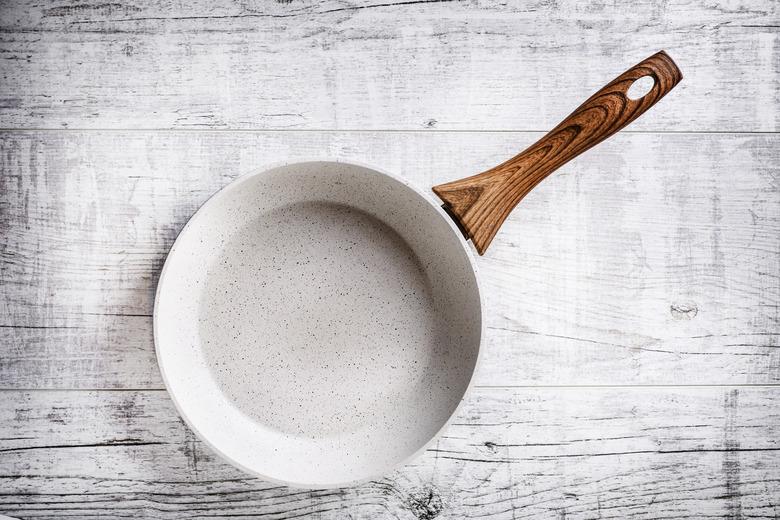How To Repair Porcelain-Coated Pans
Porcelain-coated pans are covered in a substance called enamel. This coating is fired onto the cast iron pot, similar to how a glaze is painted and then fired on pottery. The enamel is designed to protect your cookware, but it can stain or chip as you use it or if it gets hit by something hard. Cleaning your enameled cast iron skillet or pan is not difficult but repairing chipped enamel can be dangerous.
Cleaning Enamel Cast Iron Pans
Cleaning Enamel Cast Iron Pans
Pans that have a light-colored enamel allow cooks to monitor browning, but they can become discolored and stained the more you use them. To clean your pan, fill it halfway with water and place it uncovered on your stove. Boil the water, keeping it at a rapid boil for two or three minutes. Turn the stove off and use a wooden spatula to scrape the pan. Then, pour the water out and let the pan sit for a few minutes. As the pan dries, the residue will start to flake off. Once this begins to happen, wash your pan with hot, soapy water and then dry completely.
If your enamel is stained, it is safe to soak it in a bleach solution, according to Cook's Illustrated. For a light stain, use 1 teaspoon of bleach per 1 pint of water. For darker stains, soak your pan in a solution of one part bleach to three parts water. Let it stand overnight. If the stains are not removed, soak it for an additional night.
Repair Chipped Enamel on Cast Iron
Repair Chipped Enamel on Cast Iron
Enamel is essentially glass, and it will thin down over time, eventually cracking or chipping. When you begin to notice that your enamel has thinned, it isn't safe to use. If it breaks while you are cooking, you could be injured. Chipped enamel cast iron may also be a health risk as the glass could end up in your food.
Repairing your chipped enamel can be dangerous, so don't attempt this on your own. Check your manufacturer's warranty to see if your pot or pan can be replaced for free. If it cannot, look for a re-enameling professional in your area and ask for a price quote. Often, this service can be costly, so it may only cost a little more to purchase a replacement.
Preventing Scratching or Chipping
Preventing Scratching or Chipping
You can use any utensils you'd like with cast iron, even metal. But when using metal or other heavy objects, be gentle. Banging it against the inside of your pot or pan will cause the enamel to chip or crack. Small scratches are OK, and it is still safe to use when scratched. You can also continue to use your pot or pan with small chips, as long as it was caused by hitting the enamel with a utensil and not because the enamel has thinned.
To prevent damage to the enamel while cooking, make sure to slowly increase or decrease the temperature under or around the pot or pan. A dramatic change could result in a crack. Also, never heat your enamel cast iron pot or pan when it's empty. Only use high heat when you boil water or cook a dish with a significant amount of liquid inside.
